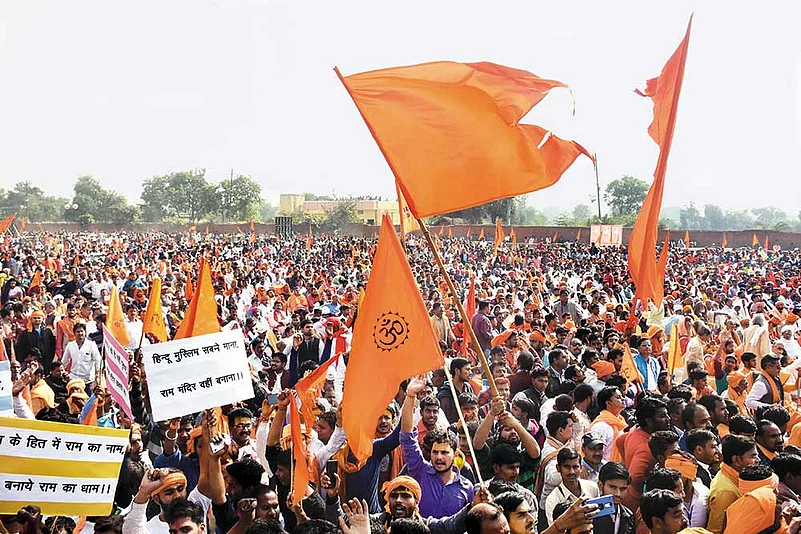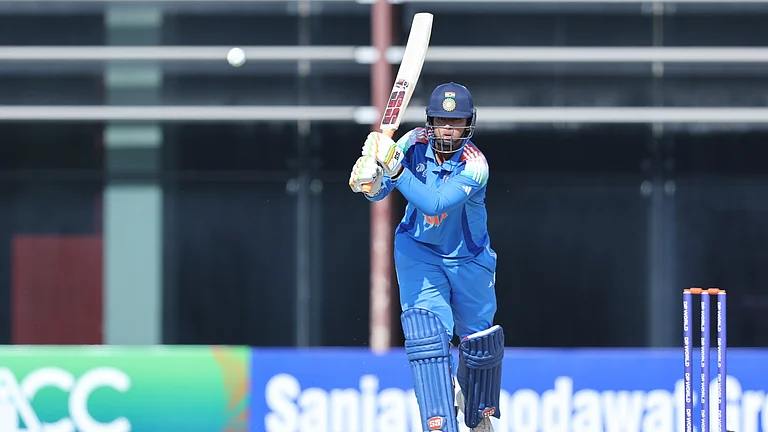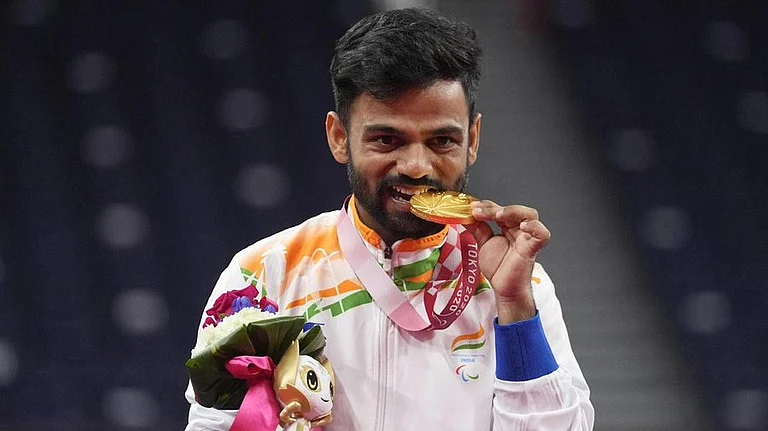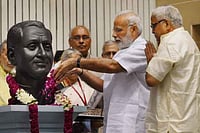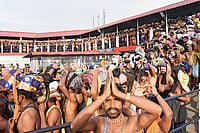What the emergence of Narendra Modi in the political centrestage has done is to redefine Indian polity, and reclaim that core aspect of Indian nationhood which in many ways had inspired India’s global importance and identity in the last three centuries. From the fringes and sidelines to the mainstream, the growth of the Hindu nationalist political movement has transformed and channelled Indian national discourse, making relevant the hitherto ignored or taboo strands of the Indian freedom movement.
India was awaking from a thousand years of slumber, as Swami Vivekananda had observed in the late nineteenth century. In fact, it is not an exaggeration to say that Swami Vivekananda was the father of modern Indian renaissance. The freedom moment gradually came to focus on the immediate aspect of throwing out the British. But it simultaneously triggered an unresolved national churning in India after the British left. The Congress under Jawaharlal Nehru got the first chance to shape India after 1947. But the teachings and aspirations of an awakened India, as scripted by Vivekananda, Bal Gangadhar Tilak, Lala Lajpat Rai, Bankimchandra Chattopadhyay, Sri Aurobindo, Veer Savarkar, Keshav Baliram Hedgewar, Guru Golwalkar, Syama Prasad Mookerjee and Sardar Patel did not find political expression till the eighties in a decisive manner. Swapan writes “I believe it is important to understand the phenomenon not only from the perspective of its critics but also in terms of how it perceives itself. There has, for example, been an accusation that Hindu nationalism is singularly detached from the freedom struggle”. Cultural nationalism—that undeniable spur to the freedom struggle--was the base of this alternative political philosophy which Swapan Dasgupta in his new book has chosen to call “the Indian Right”.
Dasgupta has made an honest and avowedly “sympathetic” attempt to understand the ethos of this new political expression. The success of this experiment is convincingly traced in the pages of Awakening Bharat Mata. The author observes that it is an attempt to generate more debate and writings on similar lines. In fact, the thoughts on Indian cultural nationalism are scattered, diverse and disoriented. It was the political genius of Narendra Modi that made this ideology a successfully combative instrument of change and power. But for his success, these expressions may not have gained any currency, and books like this may not have been written. In a way, Dasgupta’s is the first comprehensive attempt to see the new political victories of Hindu nationalists and situate it in a historic, ideological continuity. In that sense, it’s a pioneering work, a path-breaking approach to contemporary history.
The clash of ideologies and the inevitability of the relevance of the new Hindu right’s approach is captivatingly narrated in the book. It also helps to understand the victories of the BJP in the political context and establish that this facet of Indian polity is bound to stay for long.
As Dasgupta underlines, the Ayodhya movement was the turning point: “It was the Ayodhya campaign that set the terms of a political discourse that has persisted in one form or another till today”. L.K. Advani’s insightful article on this aspect is enlightening. But the subtler role of the RSS, VHP and other affiliate organisations is underplayed in the book. The role of leaders like Hedgewar, Guruji Golwalker, Moropant Pingle, Ashok Singhal, Dattopant Thengadi, Deendayal Upadhyaya and the significance of the organisational network for making the decisive mandate of 2014 a reality needs a more empirical and detailed study. This work can be fully authoritative only with an inclusion of the latter. But, as a first attempt, this book is compelling enough. The collective wisdom of the cultural underpinnings of the national movement is actually the literature of Indian nationalism. Moreover, it tried to forge national unity and was inclusive, albeit harking back to a cultural universe that was predominantly Hindu.
A remarkable aspect of Awakening Bharat Mata is its perspective on Chhatrapati Shivaji, as a visionary and a nation-builder. The Indian resistance to the formidable challenge to Mughal domination is cited as a defining moment in the awakening of India. The authenticity of historians like J.N. Sarkar, R.C. Majumdar and R.G. Bhandarkar, the contributions of Bakimchandra, Sister Nivedita and Aurobindo in the footsteps of Vivekananda in shaping the Indian renaissance ideology are extensively covered in the book. This is an authoritative guide map to the understanding of the emerging nationalist fervour.
The inclusion of S. Gurumurthy’s article, which analytically grasps the essence of the new political philosophy, is a value addition. Dasgupta has tried to explain the new phenomenon by juxtaposing it with similar nascent trends in the West. But Hindu history is as unique as other great world civilisations and needs no defence. The defeated ‘Left liberals’ might see things differently. As Dasgupta puts it, “There has been an inclination to view India’s right-wing politics as either a variant of fascism or merely a collection of sectarian prejudices. The centres of intellectual power—notably academia and the media—have been particularly hostile to the BJP and those identified with it, an opposition that varies between condescension and shrill disavowal”.
But the real protagonists of this “remake India mission” are not apologetic. The collection of articles that is cited by Dasgupta is the author’s own selection. Only, a more representative, cohesive, list would have served the purpose better. What is the Indian right, who are the Indian right’s protagonists? Why is it being discussed at this particular juncture?
The context is the phenomenal rise of the BJP vis-a-vis the stunning poll results of 2014 and 2019, where under Modi an alternative ideological narrative to Indian polity has gained wide acceptance with the electorate. The tectonic political shift that Modi brought about in the last five years has inspired a large number of books on the new leader and his policy template.
Swapan Dasgupta’s book is entirely different from all those. It is an excellent academic exercise in finding the roots of the Indian right. Not contextualised by the Modi phenomenon as in other efforts, Swapan Dasgupta has brilliantly tried to examine the political beliefs of the Indian right. And who its icons were in the past two centuries.
The opening chapters, The Political Context, Motherland, Religion and Community and Politics and the Hindu Narrative give a glimpse of the entire thought process that have shaped the new awakening. Dasgupta tries to examine the ideological underpinnings of the movement in passing and how Narendra Modi in the past five years has tried to give administrative shape and initiated practical solutions to the remaking of India. He also examines how this approach is fundamentally different from the Nehruvian model. It is not religion, but culture and history that determine the new orientations. The BJP has grown by using all opportunities it gained as part of the JP Movement, the Janata Party experiment and its coalition travails. The BJP stood its ground while others faulted and slipped. The book essentially is a learner’s guide to the making of a new India.






